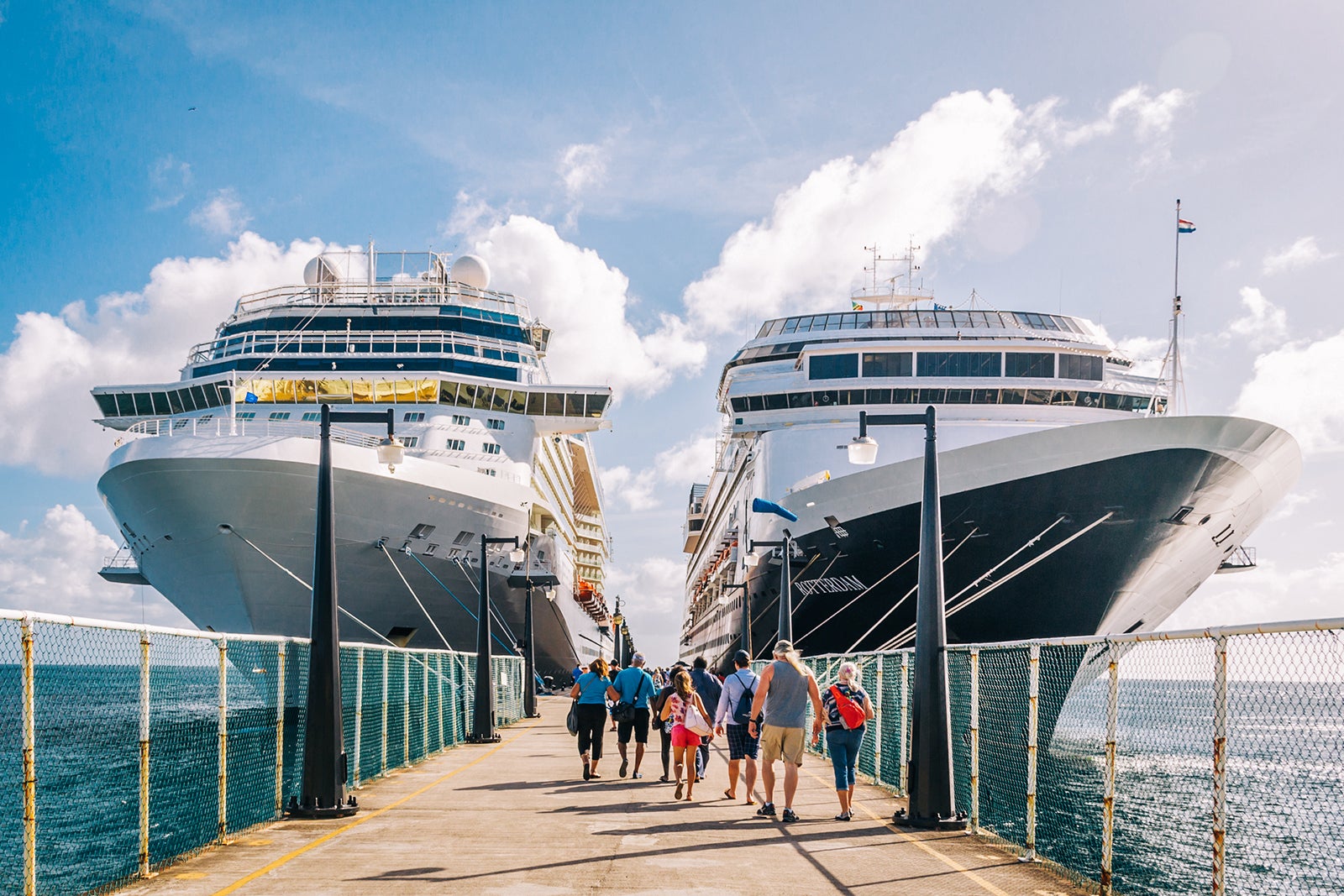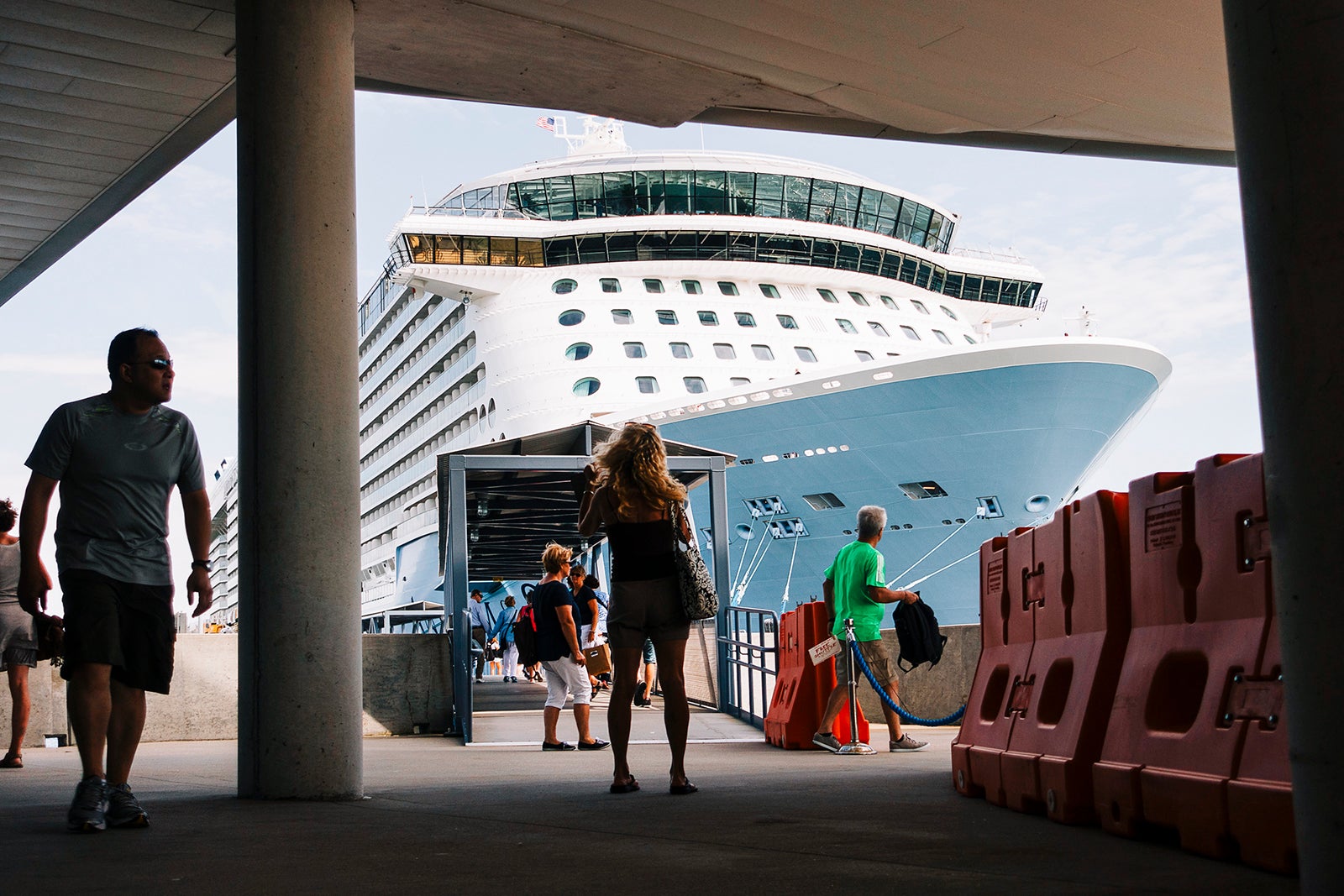Travel
Travel insurance mistakes to avoid before your next cruise – The Points Guy

The potential for unexpected and disruptive mishaps during your cruise is not something to ignore. Flight delays can lead to missed embarkations. A sudden medical emergency can result in passengers getting abandoned during port stops. Cruise lines can go bankrupt and strand travelers abroad.
As a consumer advocate, I receive hundreds of help requests each year from distraught cruisers whose trips didn’t go as planned. Each time, I’m struck by how different their situation might have been if they’d only purchased an insurance policy. Cruise travel insurance can often save the day if you get hit by a surprise calamity before or during your cruise.
For cruise news, reviews and tips, sign up for TPG’s cruise newsletter.
Of course, though, that’s only true if you have a policy with the correct type of insurance coverage. Travel insurance mistakes and misunderstandings are common among cruise ship passengers and can lead to travelers finding themselves uninsured or under-insured when they encounter a problem on their trip.
That’s something TPG wants to help you avoid. Here are the most common cruise travel insurance mistakes I’ve encountered so you will know how to make better choices for your next vacation at sea.
Not buying travel insurance because you expect to take the cruise
Not even considering travel insurance is by far the top mistake I see made by cruise ship passengers. I’m always surprised when a cruiser tells me they didn’t buy travel insurance because they didn’t expect to cancel their trip.
This is a common defense offered by travelers caught in expensive situations that travel insurance would have easily covered.
The idea that you don’t need travel insurance because you don’t expect to cancel your cruise is flawed at its most basic level. The fact is, travel insurance is meant to protect you from unexpected events that cause you to cancel or interrupt your cruise.
Before you reject the idea of travel insurance to protect your next cruise, consider what will happen if:

Daily Newsletter
Reward your inbox with the TPG Daily newsletter
Join over 700,000 readers for breaking news, in-depth guides and exclusive deals from TPG’s experts
- You get sick or injured before or during the trip.
- You lose your job and can’t afford to go.
- You or a family member is hospitalized or dies.
- Your flight is canceled or delayed and you miss embarkation.
- The airline loses your bags on the way to the cruise ship.
That’s just a sampling of surprise events that comprehensive travel insurance could cover (depending on the policy). However, if you don’t have a policy protecting you and you’re in your cruise contract’s penalty zone, you will miss your vacation and won’t get your money back.
Related: Is travel insurance worth it?
Not budgeting for travel insurance
Another frequent excuse I hear from cruise ship passengers about why they didn’t purchase travel insurance is the cost. That can be a short-sighted decision, though; if something goes wrong, an uninsured traveler can end up owing far more than the price of a comprehensive travel insurance policy.
Consider what would happen if you had an accident during a shore excursion and needed to be medically evacuated. Those emergency services can easily cost $50,000 or more, depending on your location. During a recent cruise to Antarctica, I was required by Aurora Expeditions to have $250,000 of medical evacuation insurance. Traveling to remote locations — or even not-so-remote locations — without medical evacuation coverage could be life-altering if you end up in a catastrophic emergency.
If you intend to spend thousands of dollars to take a cruise, it’s always a good idea to budget some of your vacation funds for a travel insurance policy that minimally covers medical care and evacuation home. If you don’t, you leave yourself wide open to medical bills, cancellation penalties and more.
Related: Should you get travel insurance if you have credit card protection?
Buying travel ‘protection’ from your tour operator
A handful of tour operators and cruise lines sell something called “Travel Protection” or “Travel Waiver,” which a sales rep will offer to you when you purchase your cruise. If you’re booking online, a pop-up will appear before you complete your reservation. It will say something like “Warning! Protect your investment with our Travel Protection Plan” or “Get peace of mind with Travel Protection.”
This product isn’t called travel insurance because it isn’t travel insurance — it’s a hybrid product.
The travel insurance industry is highly regulated. If you buy a policy through an actual travel insurance company, you will be protected by specific laws and regulations. If you have a complaint about your travel insurance policy or claim, you can escalate your problem to your state’s insurance board.
Most importantly, travel insurance companies have underwriters, so consumers have a safety net if something goes catastrophically wrong with the travel insurance company.
If you purchase travel protection instead, many safety protocols meant to protect consumers who buy travel insurance will not apply to you.
Before buying one of these policies, it’s critical to understand what you’re purchasing. Travel Protection has two parts:
Part A: This is predeparture cancellation protection (the passenger’s cancellation) and is a self-insured product provided entirely by the cruise line or tour operator. There is no underwriter. This is often advertised as a “cancel for any reason” policy, but that moniker is often misunderstood by the travelers who buy this product. I’ll explain further below.
Part B: This is post-departure protection and will be an actual travel insurance policy provided by a third-party insurance company. That part of the plan will provide medical coverage, emergency evacuation protection, trip interruption and more.
Because Part A is not a travel insurance product, passengers are putting their “investment” in a precarious situation should the cruise line or tour operator go out of business or become insolvent. If the operator has no money to pay the claims, there is no safety net without an underwriter. Thus, the customers will be left empty-handed.
That’s the unfortunate situation that many Vantage Deluxe World Travel customers found themselves in last June. When the tour operator canceled all future tours and filed for bankruptcy, it owed $108 million to roughly 10,000 customers. Many of those would-be travelers had approved Part A (predeparture) Vantage Travel Protection claims and were waiting for payment when the company went belly-up.
Other Vantage customers erroneously believed that Part B of the pricey travel protection plan would protect them under all circumstances — including bankruptcy.
Far too late, these stunned travelers read through their policies and discovered the truth about that expensive protection: It was worthless if the company had no money to pay its bills, and neither part of the plan had an insolvency or bankruptcy clause.
Of course, that is an extreme case. A typical cruise ship passenger is much more likely to encounter a less dramatic issue with this type of travel protection, usually regarding “cancel for any reason” coverage.
Travel protection policies are often advertised as having “cancel for any reason” coverage, but the fine print reveals that only a few specific circumstances allow a traveler to cancel and receive a cash refund. For anything not listed as a legitimate reason to cancel for a monetary payment, the cruiser will receive a future travel voucher.
If you choose to buy a travel protection product instead of a travel insurance policy, make absolutely certain you read through the entire document and understand what you’re buying.
Related: The 5 best cruise travel insurance plans
Assuming your health insurance will cover you on the ship
Hopefully, you’ll never discover through experience that shipboard medical care can come at an astronomical cost. Many cruise passengers have learned this lesson only after falling ill during their trip. But the worst news comes after the bill arrives: Most domestic health insurance plans — including basic Medicare — do not provide international coverage.
That means as soon as your cruise ship sails into international waters, you’re medically uninsured. Any healthcare bills you accrue during your trip will be your responsibility.
It’s not hard to imagine just how expensive and devastating it could be for an uninsured cruiser who becomes sick or injured on vacation. To make matters worse, cruise lines and foreign hospitals expect payment at the time services are rendered. No matter the circumstances, you’ll be expected to pay immediately.
And I do mean no matter what the circumstances. A widow once contacted me soon after her husband had suddenly died aboard Holland America‘s Eurodam.
The shock of losing her spouse was made even worse by what she viewed as the callous attitude of the crew member who handed her a bill for her husband’s failed treatment — and expected her to pay before she was disembarked at the next port of call.
Unfortunately, that couple had assumed their Medicare plan was protecting them during their Caribbean cruise. It wasn’t. (Note: There are supplementary Medigap plans that can provide international health care benefits for Medicare beneficiaries. These policies come at an additional cost and have coverage limitations and caps. Before using one, travelers should review all the details of the plan.)
While this woman’s situation was extreme, accidents and illnesses happen all the time on fun-filled cruises. You don’t want a lack of insurance to make those events more catastrophic than they are.
A comprehensive travel insurance policy can provide not only healthcare coverage abroad but also medical evacuation and repatriation — services that can easily cost tens of thousands of dollars.
Related: What happens if you get sick on a cruise?
Not reading and understanding the travel insurance policy
Travel insurance policies are many pages long and often contain confusing terms. Many travelers buy policies that seem acceptable, and they gloss over the details. However, if you don’t review and understand the travel insurance policy you’ve purchased, that mistake can have giant repercussions.
A one-size-fits-all travel insurance policy does not exist. The choices of travel insurance products available for cruise ship passengers are extensive, with options from basic to full coverage.
To know exactly which protections you’ve purchased, you must thoroughly read all the details of your plan. Each policy will have a list of named perils. If something on that list causes the cancellation or interruption of your trip, you can claim coverage. If the circumstances you’re facing are not on that list, you’re out of luck.
Not only should you pay attention to the named covered events, but equally important are the exclusions — conditions that can invalidate your policy. For instance, if you’re planning on zip lining, bungee jumping, rock climbing or participating in any other extreme adventure, you’ll want to make sure your policy doesn’t exclude risky activities.
The travel insurance industry provides a generous lookover period, usually 10 to 15 days after purchase. Always use that two-week window to carefully review your policy. Do not skim over details you don’t understand and hope for the best. If you need help understanding the fine print, contact the travel insurance company for clarification.
If you determine during that time that the policy doesn’t provide the coverage you want and need, you can request a refund and continue your search. After that lookover period, your travel insurance policy is neither refundable nor changeable.
Related: The best travel insurance policies and providers
Waiting too long to purchase travel insurance for the cruise
A common mistake some cruise ship passengers make is waiting too long to buy travel insurance.
The general rule of thumb is that if you intend to insure your trip, you should purchase that protection at the same time you start to make prepaid, nonrefundable reservations. That includes airfare, excursions, pre- or post-cruise hotels and anything else for which you will not receive a refund if you need to cancel the trip.
Travel insurance coverage typically begins to protect you the day after you purchase the policy. So, at any time after that, if a covered event happens to you and causes you to cancel your trip, you’ll be protected from financial penalties. Of course, if you wait too long to purchase your travel insurance for your cruise and an unexpected event occurs, you won’t be able to buy a retroactive policy.
If you enter the cancellation penalty phase of your cruise contract, you’ve waited too long to buy travel insurance. In fact, some companies won’t allow you to purchase travel insurance after that date.
Not disclosing a preexisting condition
Not disclosing a preexisting condition is a travel insurance mistake that can have devastating consequences. Although buying a policy that covers a preexisting condition is possible, it’s a bit more complicated.
Cruise ship passengers with preexisting conditions should be aware that their window to purchase travel insurance is abbreviated. Most travel insurance companies require travelers with preexisting conditions to purchase travel insurance within 14 to 21 days after making their initial trip deposit.
If you’ve been diagnosed with any medical problems in the 12 months preceding your trip or have a persistent condition, you must be certain to:
- Buy a policy that specifically names coverage for preexisting conditions.
- Make your travel insurance purchase within the first 14 to 21 days after putting a deposit down on your trip.
Cruisers who file a travel insurance claim for a medical problem related to a preexisting condition will be at great risk of having that claim rejected.
Underinsuring the cost of the entire cruise package
Travel insurance can significantly increase the cost of your cruise vacation. Prices vary based on the level of protection you choose, the age of all travelers on the policy, the length of the trip and the state where you live. If you wish to be fully protected, it’s critical not to undervalue your trip.
If you lowball the cost of your cruise and something goes wrong, your claim will only be paid based on the value of what you insured. Passengers who have purchased an annual insurance plan should pay careful attention to the limits on their policy. It can be easy to accidentally underinsure your cruise if you’re relying on an annual travel insurance policy with a per-trip or per-year cap.
Cruise ship passengers should always insure every nonrefundable, prepaid part of their itinerary. That includes the cruise, airfare, hotels and third-party excursions.
Bottom line
Cruise travel insurance can provide peace of mind and protection from the repercussions of unexpected events that could ruin your vacation and wreck your wallet.
Purchasing travel insurance does not have to be a chore. Follow these easy steps for success:
- Use a website like InsureMyTrip or Squaremouth to compare various policies and cruise travel insurance providers.
- Read your policy and ensure you understand what’s covered and how to file a claim if needed.
- Carry a copy of your travel insurance card during your cruise, which will have a toll-free number if you need help.
- Enjoy your cruise.
If you have a problem with a travel insurance company, cruise line, airline, car rental agency or hotel, send your request for help to ombudsman@thepointsguy.com, and I’ll be happy to investigate.
Planning a cruise? Start with these stories:












:max_bytes(150000):strip_icc()/roundup-writereditor-loved-deals-tout-f5de51f85de145b2b1eb99cdb7b6cb84.jpg)


